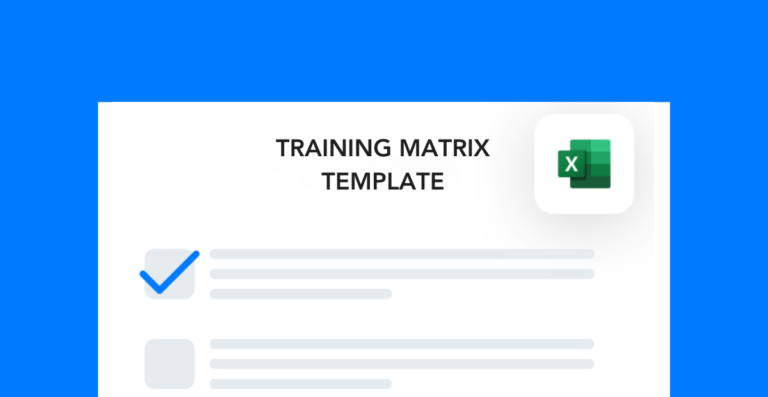As a warehouse operations manager, I spent a lot of time making staffing plans and organizing training sessions. Putting together a quick shift plan, however, relied on my knowledge of my team—who was trained to do each task and which areas needed more coverage (and therefore more training sessions).
Without my knowledge, it would have been extremely difficult to staff each area of the operation for a shift, let alone get it up and running efficiently. That’s why we used a training matrix to fill in the gaps.
This document gave us managers the freedom to take our vacation days without worrying about how other leaders might struggle to put a shift plan together. Plus, it helped us find even more training opportunities and to plan for future turnover.
What is a training matrix?
Put simply, a training matrix is a document that lists your workers and which tasks they’re qualified to do based on the training they’ve received. A typical matrix includes the following information:
- Employee name and ID
- Employee role and department
- Training required for each specific role
- General training required for all employees
This list is the bare minimum of what you should track—some sites may choose to add more fields to their matrices. The goal is to regularly update this document so that you always know who has the training for each task.
What should a training matrix look like?
There’s no specific blueprint for what a training matrix should look like, although it should be as simple as possible. Documenting hundreds of employees’ training data in a user-friendly format is easiest when you keep it simple.
Everyone within an organization should be using the same training matrix format to ensure consistency across departments. This makes it easier for managers to labor share employees who have training in multiple areas. Plus, it reduces the chance of managers missing critical OSHA-mandated training for their teams.
The most common format for training matrices is Excel. That’s because the Excel format allows you to filter, sort, and organize your data in a way that Word documents doesn’t. The only issue you might run into is having too many people making edits to the matrix at a given time.
At my site, we used a learning management system (LMS) to update our training matrix and to create shift plans during peak season with it. With the LMS, we made sure that our teams’ training information was uploaded into the matrix for other departments to see.
So, when they needed someone who was trained to drive a reach truck in the outbound area, they could easily look up all the trained workers and see who was onsite to help. This eliminated a lot of confusion and helped our operation run smoother—in more ways than one.
Benefits of training matrices
At the end of the day, a training matrix should save managers time on administrative tasks. Now, it might not feel that way in the moment. I know there were plenty of managers at my site who felt that updating the matrix was tedious.
But the number of production hours we would have lost trying to fill staffing gaps (especially during the holiday season) without a training matrix would have cost much more than the time it took to quickly update the document.
Training matrices also eliminate the back-and-forth communication that has to happen to find workers to cover tasks. Instead of getting on the radio and asking inbound if they had anyone to drive a forklift, I could just look it up on the training matrix.
Plus, having everyone’s skills in one document made it easy to see training gaps. Some shifts had a lot of pickers and not enough packers or truck loaders. Having an updated training log helped us to correct these imbalances and ensure that we always had enough people to cover our operational needs.
Other posts you might like…
No posts

